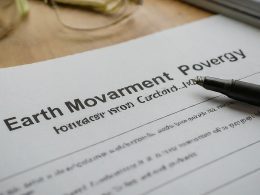Introduction
Creating a strong rental listing is one of the best ways to find reliable tenants. A clear, honest, and well-structured listing helps renters understand what your property offers and why it is a good choice. When done right, your listing works like a filter. It attracts responsible tenants and reduces time spent answering basic questions.
This guide will show you how to write a rental listing that stands out and brings in the right audience.
Why a Good Rental Listing Matters
Your rental listing is your main tool for marketing your property. It tells potential tenants what the home offers and why it is worth considering. A well-written listing saves time for both you and the renter. It reduces unnecessary inquiries and attracts people who truly match your requirements. A clear and honest listing also builds trust. When tenants feel confident about what they read, they are more likely to contact you and schedule a visit.
Understand What Tenants Look For
Before writing your listing, think about what renters want. Most tenants look for basic details like rent, location, size, amenities, and photos. They want to know what makes the property comfortable, safe, and convenient. A listing that answers these questions helps renters decide faster. If your listing leaves out important information, people may skip it or keep asking repetitive questions.
Start With a Strong Title
A good title helps your listing appear in search results and grab attention. Keep it simple and clear. Use important keywords such as the property type, number of bedrooms, and location. For example:
- Two-Bedroom Apartment for Rent in Safe Neighborhood
- Spacious 1BHK Near Market and Metro
- Affordable Family Home With Garden
A clear title attracts the right people and sets expectations.
Write an Engaging Opening Paragraph
Your opening paragraph should make renters want to read more. Keep it friendly and highlight the best feature of your property. It could be the location, size, rent, or special amenities. A simple and engaging start also helps your listing stand out from others that may feel boring or rushed.
List the Key Property Features
After the introduction, provide clear details about the property. Renters want complete and honest information. Include:
- Property type (apartment, house, studio)
- Number of bedrooms and bathrooms
- Size in square feet
- Floor level if it is an apartment
- Parking availability
- Balcony, garden, or terrace
- Pet policies
- Nearby markets, schools, or transportation
- Furnishing level (furnished, semi-furnished, unfurnished)
Use short sentences that are easy to understand. This makes your listing readable for everyone.
How to Write a Rental Listing That Attracts Quality Tenants
1. Start With a Clean, Strong Headline
Your headline is the very first thing renters see, and it plays a big role in whether they click on your listing or scroll past it. A strong headline sets the tone, creates interest, and gives renters a quick idea of what makes your property worth exploring. Since most renters browse through many listings at once, your headline needs to be clear, simple, and focused on what makes your property stand out.
A good headline usually highlights three main elements:
- Property type: This helps renters instantly understand what you are offering.
- Key feature: Mention one main highlight that makes your space appealing.
- Location feel: A short hint about the area can make the headline more attractive.
These small details help renters picture the property before even clicking.
For example, a headline like “Bright 2-Bedroom Apartment Near City Park With Modern Kitchen” works well because it gives useful information in a compact way. It tells the renter what type of home it is, where it’s located, and what feature stands out. Anyone looking for a bright space near a park will pay attention right away.
When writing your headline, think about what renters care about most. Is your home close to public transport? Does it have a large balcony? Is it newly renovated? Pick one strong point and use it in a simple, clear headline.
A good headline doesn’t need fancy words. It needs honesty, clarity, and a reason for renters to stop scrolling. With the right headline, your listing immediately becomes more appealing and attracts renters who are the right match for your property.
2. Open With a Clear Property Summary
The first paragraph should give a simple overview. Mention the property type, size, and the kind of renter who would enjoy it.
Example: “This cozy 2-bedroom home is ideal for small families or working professionals who want comfort, convenience, and a peaceful neighborhood.” This short summary helps readers decide if the property matches their needs.
3. Highlight Key Features in an Easy Format
Renters want fast information. Use bullet points to list important features. This keeps the listing clean and easy to read.
Include details like:
- Number of bedrooms and bathrooms
- Parking availability
- Furnished or unfurnished
- Nearby schools or transit
- Updated appliances
- Outdoor space
- Safety features
Clear bullet points reduce confusion and cut down follow-up questions.
4. Describe the Neighborhood
Quality tenants often care as much about the area as the home. A short neighborhood description shows what life around your property looks like.
Mention things such as:
- Local markets
- Parks
- Public transport
- Work hubs
- Safety and community feel
Keep it honest. A simple explanation helps tenants imagine living there.
5. Use Photos That Tell a Story
Good photos attract serious renters. They also make your listing look trusted and transparent.
Tips for better photos:
- Use natural light
- Capture wide angles
- Keep rooms tidy
- Show every important space
- Add at least one outdoor image
Photos should reflect the true condition of your property. Realistic images bring in tenants who know what to expect.
6. Be Clear About Rent and Rules
Transparency helps you attract responsible tenants. State the monthly rent, deposit, lease duration, and any rules upfront.
You can include:
- Pet policy
- Smoking rules
- Utility details
- Maintenance responsibilities
When expectations are clear, you avoid future issues.
7. Write a Strong Call to Action
End your listing with a simple call to action. Invite the renter to book a visit, send a message, or apply.
Example: “Interested in a viewing? Contact us to schedule a quick tour.” A clear ending encourages the right tenants to take the next step.
8. Avoid These Common Mistakes
Many landlords lose good tenants because of simple listing errors. Try to avoid:
- Long, confusing paragraphs
- Exaggerated descriptions
- Low-quality or dark photos
- Missing details about rent
- Overuse of technical or complex words
A clean, honest listing builds trust instantly.
9. Bonus Tip: Market Your Listing on the Right Platforms
Even the best listing needs the right audience. Choose platforms that help you reach quality renters. Whether you want to list your vacation rental or list property for rent, picking a trusted platform increases visibility and saves time.
Create a Call to Action
A call to action tells the renter what to do next. After describing the property, invite them to contact you. You can say:
- Contact me for a visit
- Call to schedule a viewing
- Message for more details
This encourages potential tenants to take the next step.
Keep Your Listing Updated
If your listing becomes old or if certain details change, update it. For example, if you add new appliances, repaint the home, or give a rent discount, update the information. Fresh listings get more attention and show that the property is still available.
Common Mistakes to Avoid
Many landlords make mistakes that reduce the quality of their listings. Here are a few to watch out for:
- Using unclear or vague descriptions
- Writing too little information
- Uploading blurry or dark photos
- Forgetting to mention rent or deposit
- Using complex or formal language
- Not checking spelling and grammar
Fixing these mistakes instantly improves the listing.
Sample Rental Listing Format
Here is a simple format you can follow when writing your own listing:
- Short and clear title
- Friendly introduction
- Key property details
- Neighborhood information
- Special features
- Photos
- Rent, deposit, and terms
- Call to action
This structure keeps your listing organized and easy to read.
Why Good Tenants Prefer Good Listings
Quality tenants look for listings that are clear, honest, and well-written. They prefer landlords who communicate well and provide complete information. A strong listing shows that you take care of your property and respect your tenants. This builds trust even before the first conversation. Good tenants want a stress-free renting experience, and a clear listing is the first step in that direction.
Final Thoughts
Writing a rental listing that attracts quality tenants is not complicated. Keep it clear, simple, and honest. Share the details that matter most, support them with good photos, and choose the right platform to publish your listing.
With the right structure and information, your listing can bring in responsible tenants who value your property and treat it with care.











